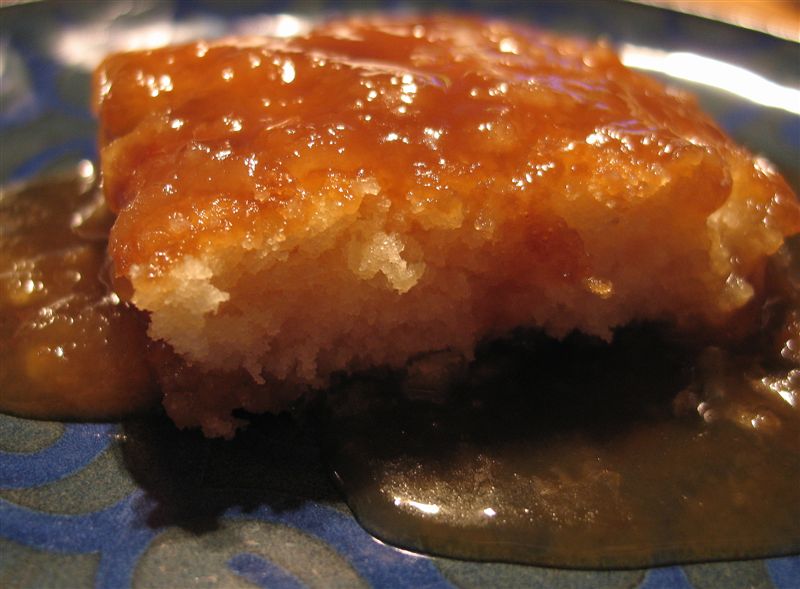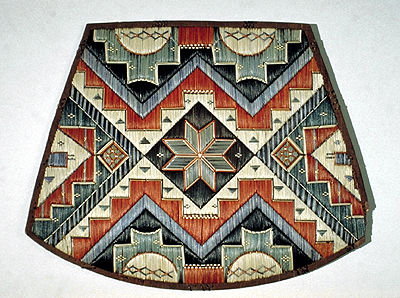Browse "Arts & Culture"
-
List
Popular Jewish Dishes in Canada
The roots of the Jewish community in Canada go back to 1760 when Jews began to settle in Canada after the British Conquest of New France. The community remained small until the 1880s when large numbers of Ashkenazi Jews left Eastern Europe and made Canada their new home. The next major cohort of Jewish immigration began in the late 1950s when Jews from Morocco settled in Quebec. Each of these communities brought food from their homelands with them to Canada. They changed the food landscape of cities across the country. Many of these dishes remain an important part of Canada’s culinary identity to this day. (See Jewish Food in Canada.)
"https://d2ttikhf7xbzbs.cloudfront.net/Jewish_dishes/challah.jpg" // resources/views/front/categories/view.blade.php
https://d2ttikhf7xbzbs.cloudfront.net/Jewish_dishes/challah.jpg
-
Article
Pouding Chômeur
The Québécois dessert called pouding chômeur — poor man’s pudding, or more literally, pudding of the unemployed — is delectably rich and incredibly simple.
"https://d2ttikhf7xbzbs.cloudfront.net/media/media/9861ff9c-cc39-4d9e-97b1-81b0938aff90.jpg" // resources/views/front/categories/view.blade.php
https://d2ttikhf7xbzbs.cloudfront.net/media/media/9861ff9c-cc39-4d9e-97b1-81b0938aff90.jpg
-
Article
Sheila Na Geira
According to legend, Sheila Na Geira (also spelled NaGeira and Nagira) was an Irish aristocrat or princess who, 300 or 400 years ago, while travelling between France and Ireland, was captured by a Dutch warship and then rescued by British privateers. She fell in love and was married to one of the privateers, Lieutenant Gilbert Pike. They settled at western Conception Bay. By the early 20th century, the legend was being told as part of Newfoundland’s oral tradition, and has since been popularized by poems, novels, scholarly articles and several plays.
"https://d2ttikhf7xbzbs.cloudfront.net/dreamstime_resize_33120989-2.jpg" // resources/views/front/categories/view.blade.php
https://d2ttikhf7xbzbs.cloudfront.net/dreamstime_resize_33120989-2.jpg
-
Article
Quebec Film History: 1970 to 1989
This entry presents an overview of Québec cinema, from the burgeoning of a distinctly Québec cinema in the 1970s, to the production explosion that followed Denys Arcand’s Le déclin de l’empire américain (1986). It highlights the most important films, whether in terms of box office success or international acclaim, and covers both narrative features and documentaries. It also draws attention to an aspect of filmmaking that still has difficulty finding its place: women's cinema.
"https://d2ttikhf7xbzbs.cloudfront.net/media/media/aa8cc00a-320d-4447-bb88-20c45fede6e0.jpg" // resources/views/front/categories/view.blade.php
https://d2ttikhf7xbzbs.cloudfront.net/media/media/aa8cc00a-320d-4447-bb88-20c45fede6e0.jpg
-
Article
Quebec Film History: 1990 to Present
This entry presents an overview of Quebec cinema, from the explosion that followed Denys Arcand’s Le déclin de l’empire américain (1986) to the setback that followed 10 years later and the new wave of filmmaking that emerged at the beginning of the 21st century. It highlights the most important films, whether in terms of box office success or international acclaim, and covers both narrative features and documentaries. It also draws attention to an aspect of filmmaking that still has difficulty finding its place: women's cinema.
"https://d2ttikhf7xbzbs.cloudfront.net/media/media/3fc2649b-c4d7-4fc5-8f8f-d2d67ed75621.jpg" // resources/views/front/categories/view.blade.php
https://d2ttikhf7xbzbs.cloudfront.net/media/media/3fc2649b-c4d7-4fc5-8f8f-d2d67ed75621.jpg
-
Article
Quillwork
Quillwork refers to the Indigenous art of using coloured porcupine quills to decorate various items such as clothing, bags, medicine bundles and regalia. Quillwork pieces have been preserved in museums and cultural centres across North America. Now considered a rare artform, elders and specialized artists use quillwork to promote cultural traditions.
"https://d2ttikhf7xbzbs.cloudfront.net/media/media/c229ccc8-852e-45b7-89d1-be9a8a746dcf.jpg" // resources/views/front/categories/view.blade.php
https://d2ttikhf7xbzbs.cloudfront.net/media/media/c229ccc8-852e-45b7-89d1-be9a8a746dcf.jpg
-
Article
Quilt
Quilt as a noun refers to layers of material fastened together. Historically and traditionally, the materials in the top and bottom layer are fabrics such as cotton and/or wool, the filling in between the layers a soft batting of cotton or wool fibres.
"https://development.thecanadianencyclopedia.ca/images/tce_placeholder.jpg?v=e9dca980c9bdb3aa11e832e7ea94f5d9" // resources/views/front/categories/view.blade.php
https://development.thecanadianencyclopedia.ca/images/tce_placeholder.jpg?v=e9dca980c9bdb3aa11e832e7ea94f5d9
-
Article
"Alouette!"
"Alouette!" The most popular Canadian folksong. It also has become a symbol of French Canada for the world, an unofficial national song identifiable from the first few measures of its lively chorus in 2/4 time. Marius Barbeau is of the opinion that "Alouette" originated in France, but James J. Fuld, in The Book of World-Famous Music (New York 1966), points out that the first written version, "Alouetté," appeared in A Pocket Song Book for the Use of Students and Graduates of McGill College (Montreal 1879). The song was published later as "Alouette" in the McGill College Song Book (Montreal 1885). The first known printed version in France dates from 1893: it appeared in Julien Tiersot's Revue des traditions populaires, vol 8 (Paris). The words and music are found in many anthologies and collections in Canada, the USA, and even Europe, notably in William Parker Greenough's Canadian Folk-life and Folk-lore (New York 1897). Several versions exist in Canada. Marius Barbeau summarizes the different texts in a work appropriately named Alouette (Montreal 1946). However, in all versions of the song, with its enumerations and frequent recapitulations, the idea remains the same: the lark's feathers are plucked from its head, wings, back, tail, and so on.
"https://development.thecanadianencyclopedia.ca/images/tce_placeholder.jpg?v=e9dca980c9bdb3aa11e832e7ea94f5d9" // resources/views/front/categories/view.blade.php
https://development.thecanadianencyclopedia.ca/images/tce_placeholder.jpg?v=e9dca980c9bdb3aa11e832e7ea94f5d9
-
Article
"Bluebird on Your Windowsill"
"Bluebird on Your Windowsill." Pop song by the Vancouver nurse (Carmen) Elizabeth Clarke (b Winnipeg 1911, d Vancouver 1960). The words (1947) were inspired by a small bird which perched on a windowsill of Vancouver's Hospital for Sick and Crippled Children. The melody was added later.
"https://development.thecanadianencyclopedia.ca/images/tce_placeholder.jpg?v=e9dca980c9bdb3aa11e832e7ea94f5d9" // resources/views/front/categories/view.blade.php
https://development.thecanadianencyclopedia.ca/images/tce_placeholder.jpg?v=e9dca980c9bdb3aa11e832e7ea94f5d9
-
Article
"Canadian Idol"
"Canadian Idol." Reality television show, based on the British singing competition television show "Pop Idol" (2001- ), created by the UK's FremantleMedia and 19 TV, and produced by Canada's Insight Productions.
"https://development.thecanadianencyclopedia.ca/images/tce_placeholder.jpg?v=e9dca980c9bdb3aa11e832e7ea94f5d9" // resources/views/front/categories/view.blade.php
https://development.thecanadianencyclopedia.ca/images/tce_placeholder.jpg?v=e9dca980c9bdb3aa11e832e7ea94f5d9
-
Article
"Early Morning Rain"
"Early Morning Rain." Song by Gordon Lightfoot. Written in the summer of 1964, it recounts a lonely man's attempts to make his way back to a faraway home.
"https://development.thecanadianencyclopedia.ca/images/tce_placeholder.jpg?v=e9dca980c9bdb3aa11e832e7ea94f5d9" // resources/views/front/categories/view.blade.php
https://development.thecanadianencyclopedia.ca/images/tce_placeholder.jpg?v=e9dca980c9bdb3aa11e832e7ea94f5d9
-
Article
"If You Could Read My Mind"
"If You Could Read My Mind." Song by Gordon Lightfoot. Written in 1969, "catches the cadences of a hurt lover unused to words that cut too close" (Maclean's, 1 May 1978). The song has been recorded more than 100 times, first in 1969 by the composer for his LP Sit Down Young Stranger.
"https://development.thecanadianencyclopedia.ca/images/tce_placeholder.jpg?v=e9dca980c9bdb3aa11e832e7ea94f5d9" // resources/views/front/categories/view.blade.php
https://development.thecanadianencyclopedia.ca/images/tce_placeholder.jpg?v=e9dca980c9bdb3aa11e832e7ea94f5d9
-
Article
"Jack Was Every Inch a Sailor"
"Jack Was Every Inch a Sailor." A loose retelling of the biblical Jonah story with a Newfoundland fisherman as the hero, this folksong seems to have been adapted from the New York music-hall song "Every Inch a Sailor."
"https://d2ttikhf7xbzbs.cloudfront.net/media/media/18604b5a-1f8f-4620-a727-9fe10fc19100.jpg" // resources/views/front/categories/view.blade.php
https://d2ttikhf7xbzbs.cloudfront.net/media/media/18604b5a-1f8f-4620-a727-9fe10fc19100.jpg
-
Article
"She's Like the Swallow"
"She's Like the Swallow." Distinctive Newfoundland variant of a large family of songs about unhappy love. Both Maud Karpeles (1930) and Kenneth Peacock (1960) collected it, and its beautiful tune has made it popular with many singers and choirs.
"https://development.thecanadianencyclopedia.ca/images/tce_placeholder.jpg?v=e9dca980c9bdb3aa11e832e7ea94f5d9" // resources/views/front/categories/view.blade.php
https://development.thecanadianencyclopedia.ca/images/tce_placeholder.jpg?v=e9dca980c9bdb3aa11e832e7ea94f5d9
-
Article
"Squid Jiggin' Ground"
This account of hijinks on the squid-fishing grounds is one of Newfoundland's best-known songs.
"https://development.thecanadianencyclopedia.ca/images/tce_placeholder.jpg?v=e9dca980c9bdb3aa11e832e7ea94f5d9" // resources/views/front/categories/view.blade.php
https://development.thecanadianencyclopedia.ca/images/tce_placeholder.jpg?v=e9dca980c9bdb3aa11e832e7ea94f5d9
